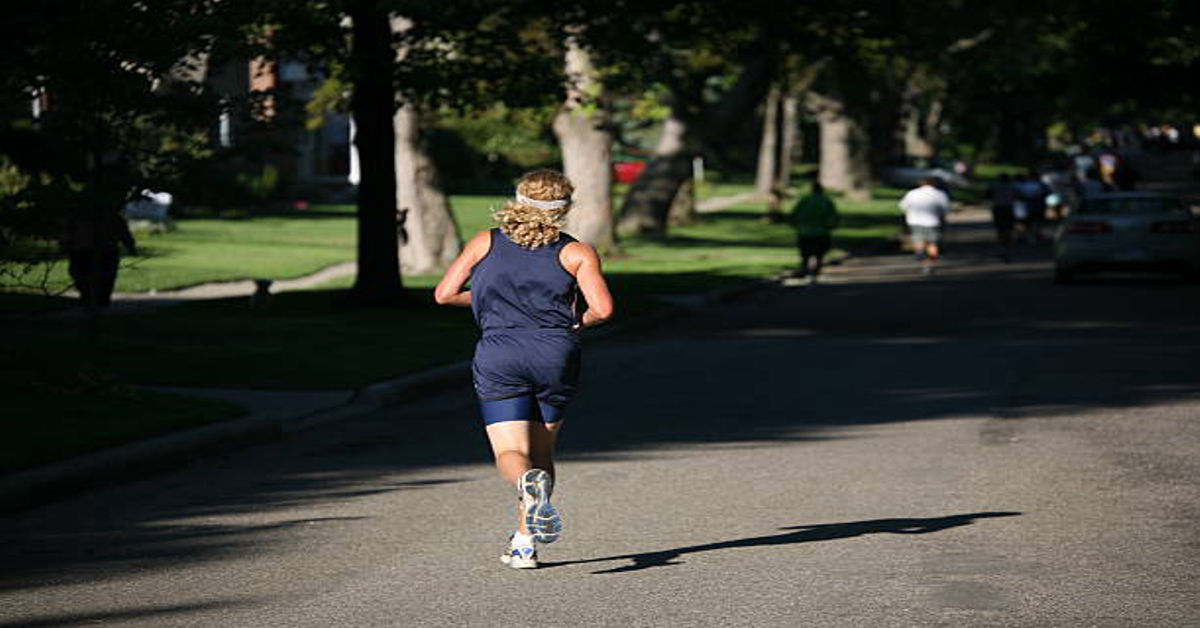When people first start running, one of the most common questions that comes up is, “How many miles is a 5K?” The answer is simple in numerical terms but profound in its meaning for runners, fitness enthusiasts, and athletes alike. A 5K (short for five kilometers) equals 3.1 miles. Yet behind that number lies a fascinating world of human endurance, health science, personal challenge, and community engagement.
The 5K run is often seen as the perfect entry point into the world of running and racing. It’s short enough to be achievable for beginners yet long enough to offer seasoned athletes a rewarding test of speed and stamina. But beyond the physical challenge, the 5K distance has cultural, scientific, and motivational dimensions that make it one of the most popular race formats in the world.
In this article, we’ll dive deep into understanding what a 5K truly represents, how it compares to other distances, what it takes to train for one, and why it continues to inspire millions globally.
1. Understanding the Basics: What Exactly Is a 5K?
The term “5K” comes from the metric system and stands for five kilometers, a unit of measurement equal to 5,000 meters. In most English-speaking countries, including the United States, people commonly measure distances in miles. To convert kilometers to miles, we multiply by approximately 0.6214.
Thus:
5 kilometers × 0.6214 = 3.107 miles, often rounded to 3.1 miles.
This means a 5K race covers a distance of a little more than 3 miles — a length that perfectly balances accessibility and endurance.
| Measurement | Kilometers (km) | Miles (mi) |
|---|---|---|
| 1 Kilometer | 1 km | 0.62 miles |
| 3 Kilometers | 3 km | 1.86 miles |
| 5 Kilometers | 5 km | 3.1 miles |
| 10 Kilometers | 10 km | 6.2 miles |
| 21.1 Kilometers (Half Marathon) | 21.1 km | 13.1 miles |
| 42.2 Kilometers (Marathon) | 42.2 km | 26.2 miles |
This simple conversion helps runners worldwide align training plans, track progress, and understand global race distances. The 5K sits at the perfect midpoint between casual exercise and competitive sport — not too long to intimidate, yet not too short to be dismissed as easy.
2. The Origin and Popularity of the 5K Race
While long-distance running has existed for centuries, the modern 5K emerged in the late 20th century as road racing gained mass popularity. Initially, marathons and 10Ks were the hallmark of endurance sports. However, as health and fitness became more mainstream, organizers sought to design races that were shorter, more inclusive, and achievable for everyone.
The 5K fit perfectly into this vision. Its rise in popularity coincided with the growth of community fitness events, charity runs, and wellness campaigns. The “Parkrun” movement — a global phenomenon offering free 5K runs every weekend — also helped normalize the distance as a friendly, community-centered race.
Today, the 5K is often:
- The first organized race for beginner runners.
- A speed benchmark for competitive athletes.
- A social fitness event for families and corporate teams.
- A fundraising tool for charities and causes.
The beauty of the 5K lies in its universality — whether you’re a teenager training for the first time, a professional athlete testing speed, or a senior seeking healthy activity, the distance is both approachable and challenging.
3. The Science Behind the Distance: Why 3.1 Miles Works So Well
At 3.1 miles, a 5K offers a physiological balance between aerobic endurance and anaerobic effort.
To complete a 5K efficiently, runners must maintain a sustainable pace while managing oxygen use and muscular fatigue. For most people, this takes between 20 and 40 minutes, depending on fitness level.
Energy Systems Used in a 5K
The body primarily relies on two key systems during a 5K:
| Energy System | Description | Contribution During 5K |
|---|---|---|
| Aerobic System | Uses oxygen to generate energy for sustained activity. | ~80–85% |
| Anaerobic System | Breaks down glucose without oxygen for short bursts. | ~15–20% |
This mix means the 5K tests both cardiovascular efficiency and muscular endurance, making it ideal for improving overall fitness.
Moreover, the 5K distance is short enough to prevent the high risk of overuse injuries that often accompany longer training regimens. For most healthy adults, a structured 6- to 8-week training plan is sufficient to safely prepare for a 5K race.
4. How Long Does It Take to Run a 5K?
The time it takes to complete a 5K varies significantly by age, gender, experience, and training level. Below is a general guide to average 5K finish times:
| Runner Type | Average Time (Minutes) | Pace per Mile |
|---|---|---|
| Elite Runner | 13–15 minutes | 4:10–4:50 min/mile |
| Competitive Runner | 16–20 minutes | 5:10–6:30 min/mile |
| Recreational Runner | 22–30 minutes | 7:00–9:30 min/mile |
| Beginner | 30–40 minutes | 9:45–12:50 min/mile |
| Walker | 45–60 minutes | 15:00–20:00 min/mile |
These are general averages, and what matters most is progress over time, not comparison. Each person’s 5K experience is unique.
5. Training for a 5K: Step-by-Step Approach
Training for a 5K doesn’t require extreme discipline, but it does demand consistency and balance. The most successful programs combine running with strength training, stretching, and proper recovery.
a. The 3 Key Training Components
- Endurance Runs: Build stamina with longer, slower runs (2–4 miles).
- Speed Work: Include intervals or tempo runs to improve pace and aerobic capacity.
- Recovery Days: Allow the body to rebuild muscle and adapt.
A sample 8-week beginner training plan might look like this:
| Week | Days of Running | Longest Run (Miles) | Focus |
|---|---|---|---|
| 1 | 3 | 1.5 | Build base endurance |
| 2 | 3 | 2.0 | Establish steady pace |
| 3 | 4 | 2.5 | Introduce light intervals |
| 4 | 4 | 3.0 | Maintain consistency |
| 5 | 4 | 3.1 | Practice race distance |
| 6 | 4 | 3.1 | Increase intensity slightly |
| 7 | 4 | 3.2 | Sharpen pace and confidence |
| 8 | 3 | 3.1 (race day) | Taper and recover |
This gradual build-up reduces injury risk while ensuring sustainable improvement.
6. Benefits of Running a 5K
Running a 5K isn’t just about distance — it’s about transformation. Physically, mentally, and emotionally, the benefits are profound.
Physical Benefits
- Improved Cardiovascular Health: Strengthens the heart and reduces the risk of hypertension and heart disease.
- Better Muscle Tone: Engages lower body muscles — quads, calves, hamstrings, and glutes.
- Increased Metabolism: Burns significant calories and improves body composition.
- Enhanced Bone Density: Weight-bearing activity helps maintain strong bones.
Mental and Emotional Benefits
- Stress Relief: Running releases endorphins, often called “runner’s high.”
- Improved Focus: Aerobic exercise enhances mental clarity and cognitive performance.
- Emotional Confidence: Finishing a 5K boosts self-esteem and goal-setting ability.
Social and Community Benefits
- Builds friendships and community through races and clubs.
- Encourages family fitness and healthy lifestyle culture.
- Supports charitable organizations through fundraising runs.
The 5K’s accessibility means nearly anyone can experience these rewards, regardless of background or prior athletic experience.
7. Comparing the 5K to Other Race Distances
Understanding how the 5K fits into the broader running ecosystem helps runners choose their goals wisely.
| Race Type | Distance (Miles) | Difficulty Level | Primary Focus |
|---|---|---|---|
| 1 Mile Run | 1.0 | Easy–Moderate | Speed and short endurance |
| 5K | 3.1 | Moderate | Aerobic capacity and pacing |
| 10K | 6.2 | Moderate–Hard | Stamina and endurance |
| Half Marathon | 13.1 | Hard | Long-term endurance training |
| Marathon | 26.2 | Very Hard | High endurance and energy management |
The 5K is the bridge between casual running and endurance racing. Many marathoners even use 5Ks to measure their speed progress between major events.
8. Pace and Speed: How Fast Should You Run a 5K?
Pacing is one of the most critical skills for success. Running too fast at the beginning often leads to early fatigue.
A practical approach is to aim for even splits — maintaining a consistent pace per mile.
| Goal Finish Time | Average Pace (min/mile) |
|---|---|
| 20 minutes | 6:26 |
| 25 minutes | 8:03 |
| 30 minutes | 9:39 |
| 35 minutes | 11:16 |
| 40 minutes | 12:52 |
For beginners, it’s more beneficial to focus on effort level rather than raw speed — run at a pace where conversation is possible but slightly challenging.
9. Common Mistakes Beginners Make
Every new runner faces a learning curve. Avoiding these pitfalls ensures steady progress:
- Running Too Fast, Too Soon: Leads to burnout or injury.
- Skipping Rest Days: Recovery is essential for improvement.
- Ignoring Nutrition: Poor fueling can cause fatigue and slower times.
- Wearing Wrong Shoes: Proper footwear prevents injuries and improves comfort.
- No Warm-Up or Cool-Down: Skipping stretches increases stiffness and soreness.
A patient, mindful approach always outperforms an aggressive one in long-term results.
10. Nutrition for a 5K Runner
Even though a 5K doesn’t require marathon-level fueling, nutrition still plays a vital role in performance.
Pre-Race Nutrition
- 2–3 hours before running: Eat a light meal rich in complex carbs (oatmeal, toast, banana).
- 30–60 minutes before: Small snack (energy bar or fruit).
Post-Race Nutrition
- Protein: Helps repair muscle fibers (eggs, lean meat, Greek yogurt, beef jerky sticks).
- Carbohydrates: Replenish glycogen stores (sweet potatoes, rice, fruit).
- Hydration: Rehydrate with water or electrolyte drinks.
| Nutrient | Purpose | Best Sources |
|---|---|---|
| Carbohydrates | Energy supply | Oats, bananas, whole grains |
| Protein | Muscle repair | Eggs, chicken, tofu |
| Fat | Long-term fuel | Avocados, nuts |
| Hydration | Maintain performance | Water, electrolyte drinks |
Balanced nutrition ensures energy efficiency and quicker recovery.
11. Equipment and Gear for a 5K
Unlike many sports, running doesn’t require expensive equipment. However, a few essentials enhance safety and comfort:
- Running Shoes: Choose based on gait and arch support.
- Moisture-Wicking Clothing: Keeps you dry and prevents chafing.
- Running Watch or App: Tracks distance and pace.
- Reflective Gear: Important for early morning or evening runs.
- Hydration Belt or Handheld Bottle: For warm-weather training.
Quality gear doesn’t have to be expensive — comfort and fit matter most.
12. The Mental Game: Motivation and Focus
Running a 5K is as much a mental challenge as a physical one. Many beginners underestimate the power of mindset. Visualization, positive self-talk, and setting incremental goals are key mental tools.
For instance, breaking the race into segments — “first mile for rhythm, second for pace, third for push” — can make the distance feel manageable.
Motivational strategies like running with a friend, joining a local club, or tracking personal bests help sustain long-term enthusiasm.
13. The Global Impact of 5K Races
From New York to Nairobi, 5K races unite communities for fitness and philanthropy. Many nonprofit organizations use them to raise awareness and funds for health, education, and environmental causes.
The social inclusivity of the 5K — open to all ages, paces, and backgrounds — makes it more than a race. It’s a shared experience promoting wellness and solidarity.
14. How to Transition Beyond a 5K
Once you’ve conquered your first 5K, you might be inspired to aim higher. Many runners naturally progress to:
- 10K runs, doubling the distance while building stamina.
- Half marathons, emphasizing endurance and strategy.
- Triathlons, combining running with swimming and cycling.
Each new goal builds on the confidence earned from completing that first 3.1-mile challenge.
15. Conclusion
So, how many miles is a 5K? Technically, it’s 3.1 miles — but in reality, it’s much more than that. It represents a journey of self-improvement, health, and empowerment. Whether you’re running your first race or your hundredth, the 5K embodies progress, community, and endurance.
Every step of those 3.1 miles carries meaning: the decision to start, the persistence to train, and the joy of crossing the finish line. It’s not just a distance — it’s a milestone in the lifelong pursuit of fitness and well-being.
FAQs
1. How many miles is a 5K exactly?
A 5K equals 3.1 miles, or 5,000 meters. It’s one of the most popular race distances worldwide.
2. How long does it take to run a 5K for beginners?
Most beginners finish between 30 and 40 minutes, depending on pace and training consistency.
3. Is a 5K a good distance for beginners?
Yes, it’s ideal for newcomers since it’s long enough to challenge endurance but short enough to be achievable.
4. How should I train for a 5K?
Follow a structured 6–8 week plan combining easy runs, intervals, and rest days for best results.
5. What should I eat before a 5K race?
Consume light, carbohydrate-rich foods 2–3 hours before running — like oatmeal, bananas, or whole-grain toast.









